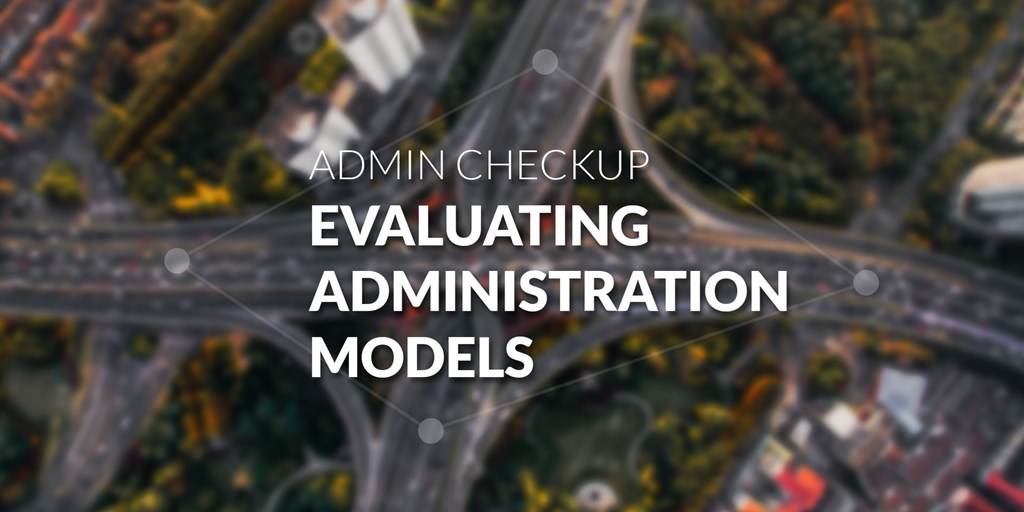Admin Checkup: Evaluating Administration Models

When you think about your benefits program, does administration come to mind?
We all know that benefits are a vital part of an organization's total compensation strategy and can make a big difference when trying to attract and retain top talent. It is easy to focus on product offerings and forget that all benefit programs come with administration requirements. Is your organization currently positioned to deliver the best benefits administration experience to both your HR team managing your benefits program and the employees who rely on the benefits you offer?
In our Admin Checkup series, we are unpacking various aspects of benefits administration to help you uncover opportunities to gain efficiency. In this article we'll be discussing the 3 most common approaches to administration:
- Carrier direct
- HRIS benefits module
- Third party administration (TPA)
Carrier Direct Admin
The most common administration model is to use the administration system of the insurance carrier(s) and benefit product provider(s) that make up your benefits program. This default option often seems simple, at least on the surface. However, being the most common model doesn't automatically make it your best option. Most people simply aren't aware that there are other approaches to benefits plan administration.
Providers rightly focus on building great benefit products, and it is these products that you put in place to serve your employees: Health Care, Dental Care, Life Insurance, Disability Insurance, Critical Illness, Employee Assistance, Health Spending Accounts etc. For many providers though, administration is nothing more than a necessary part of the sales cycle. Provider systems are often passive and difficult to navigate. As a result, HR teams end up taking on the stressful role of being billing and compliance experts.
Carrier Direct admin doesn’t scale. Administration efforts will actually compound should your benefit program take advantage of multiple insurers and benefit providers; as HR teams have to manage repeated employee enrollment and data entry in different admin systems, each with very different processes and billing cycles. Restructure your plan, change or introduce providers, and all bets are off.
Admin systems change, processes change, timelines change, and your admin support team changes.
HRIS Benefits Module Admin
The focus of a Human Resource Management System (HRIS) or Human Capital Management System (HCM) benefits module is to help create an all-in-one solution, by bringing some of your benefits administration into your HR software. These modules can be expensive and lack robust carrier integrations, and you still end up administering directly with your providers. The old adage, "jack of all trades, master of none" rings true. You benefit from automatic payroll deductions and easier total compensation reporting. However, the tradeoff is higher cost, data management redundancy, a lack of admin data compliance and process compliance, and, to a greater degree, you still work with the inconsistencies of provider technology (see above).
Restructure your plan, change or introduce providers, and you still end up learning new provider admin systems, processes, timelines, and provider support teams. Not only that, but new provider data feeds can take time and cost you big bucks.
Third Party Administration (TPA)
Third party administration attempts to solve many of the issues noted above, but as we'll see, not all solutions are created equal. There are two core forms of third party administration: traditional vs. tech-enabled.
Traditional TPA
Traditional third party administrators consolidate your administration and billing if you take advantage of multiple carriers/providers. Restructure your plan, or change/introduce providers and your administration remains consistent. The trade-off here is that traditional TPAs often lack market access. They partner with a small set of providers and if you stray outside of their network, you are out of luck: you still end up with admin system and process changes.
Traditional TPAs also often suffer from a lack of good technology. Either they lack technology completely, and you are mired with manual admin, or their technology is outdated and requires that your team be benefits experts to administer your program in compliance with your plan design contracts.
Tech-Enabled TPA
Like traditional TPAs, tech-enabled TPAs consolidate administration and billing. Unlike traditional TPAs, tech-enabled TPAs remove much of the manual process common in administration and replace it with digital solutions. Because of a commitment to digital benefits administration solutions, some tech-enabled TPAs have the ability to integrate with your HRIS ecosystem. This facilitates the push and pull of eligibility data to keep HR, benefits and payroll systems up-to-date and thereby eliminating the multi-systems data entry.
The only significant risk with a tech-enabled TPA is their ability to connect to the larger carrier/provider market. Many still have limited market access which can handicap their ability to administer any mix of products or providers.
What administration approaches have you taken? Are there other considerations that you would include when evaluating the various administration options available? Let us know what your experience has been and what could be done to help improve that model.